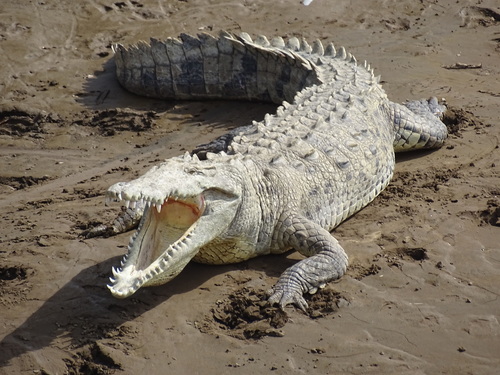
American Crocodile
The American crocodile, Crocodylus acutus, boasts a distinctive V-shaped snout and thrives in both salt and freshwater habitats. As an apex predator, it helps maintain ecosystem balance, showcasing nature’s intricate design. Its presence in diverse environments highlights its adaptability and ecological importance.
20-70 years
Lifespan
18.0 kg
Weight
Length: 1.7 m
Size
Brown, Grey, Black, Dull, Olive
Color
4-12 years
Age of Sexual Maturity
25 mph
Top Speed
Vulnerable
Conservation Status
Increasing
Population Trend
Characteristics
Crocodylus acutus, known as the American crocodile, is a large, carnivorous reptile found in coastal areas, brackish waters, and river mouths of the Americas. It is notable for its V-shaped snout, gray-green coloration, and ability to thrive in both freshwater and saltwater environments. This species plays a crucial role as an apex predator, maintaining the balance of its ecosystem.
Distribution Range of the American Crocodile
Crocodylus acutus, commonly known as the American crocodile, is primarily found in the Neotropical region. Its geographical distribution includes the coastal areas of southern Florida, Mexico, Central America (including Belize, Guatemala, Honduras, Nicaragua, Costa Rica, and Panama), the Caribbean islands (such as Cuba, Jamaica, and Hispaniola), and the northern part of South America, particularly along the coasts of Colombia, Venezuela, and Ecuador.
American Crocodile's Habitat
Environmental Conditions
The American crocodile inhabits a variety of coastal and estuarine environments. It is typically found in brackish and saltwater habitats such as mangrove swamps, lagoons, rivers, and coastal marshes. The species prefers warm, tropical climates with temperatures typically ranging from 25 to 35°C (77 to 95°F).
Ecological Niche
Crocodylus acutus is an apex predator and plays a crucial role in its ecosystem by maintaining the balance of aquatic and terrestrial environments. It preys on a wide range of species, including fish, birds, mammals, and occasionally carrion. The species is adapted to both freshwater and saltwater environments, with physiological adaptations that allow it to excrete excess salt. Juveniles tend to occupy freshwater habitats more frequently than adults, which can thrive in saltwater conditions.
Copyright @ Nature Style Limited. All Rights Reserved.
 English
English